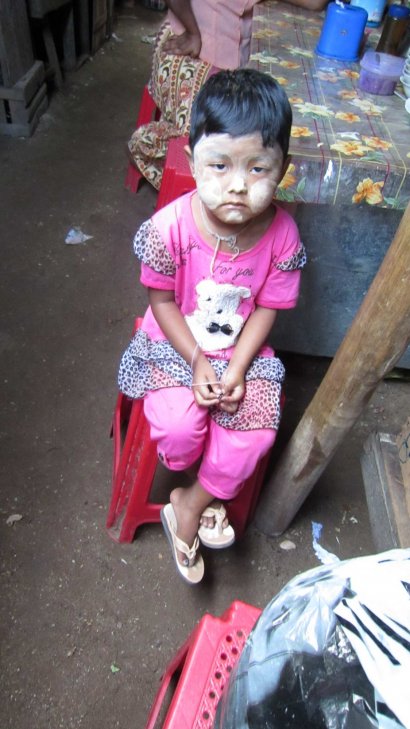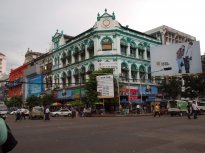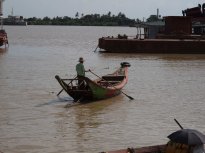To Longji or Not to Longji - Yangon
It was an easy flight to Yangon and even easier to get our VISA-ON-ARRIVAL, despite the seemingly ambiguity of the entry process as discussed in travel forums. Dada, our guide, was waiting for us. He was a small, slightly-built man wearing the typical “longji”-or what we would call a “man-skirt’. And his English was excellent.
We were whisked away through town that can only be described as a contradictory assortment of old/modern, rich/poor neighbourhoods, along well-manicured, tree-lined roads, then roads that were virtually dirt and gravel, lined with shacks and garbage. One thing we noticed was the absence of motorbikes—apparently it is illegal to use on the city roads, not sure why? The traffic was horrendous! We pull off to the side of a very busy street and following Dada dodging traffic make our way up a narrow dirty flights of stairs to the Santa Maria tour office. What a warm and welcoming greeting! Mynamar people are soft-spoken and always smiling….and the smiles, we are finding out, are totally genuine.
After finalizing tour and money issues, we followed Dada to the local market. The market was big and noisy and it gave us a sense of the type of things one can buy in Myanmar. I decided to buy myself a “lady longji” which is a floor-length skirt, for visiting temples as women need to have knees covered. It cost about $4. Men wear longjis too, long to the ankles but are tied differently. Len seemed mildly interested but hesitant to get one. Maybe for around the house—never in public! We’ll see—90% of males here wear them, some as professional attire with crisp shirts to match.

After checking in to our hotel, Dada next took us to the river and told us about the villages on the other side. The river is traversed by narrow boats as there are no bridges.
The people who live there are very poor and from minority ethnic groups. We saw a woman painting, filling and wrapping betel leaves that the local people chew and spit (stains their teeth red and leaves red splats on the ground everywhere). I wanted to take her picture but she refused as she was doing this illegally and could be thrown in jail.
On the agenda next were 2 important Buddhist pagodas, one which had a giant gold Buddha and apparently a hair from Buddha himself, and the second was the largest reclining Buddha in Myanmar. And it was HUGE! Strangely, a bevy (?) of monks were suspended on seats held up by ropes pulled by others and were giving Buddha’s face a wash!!
The last stop (and best) was the world famous Shwedagon Pagoda. It is a magical place. The main pagoda, awash in gold and jewels and towering high above all, is surrounded by dozens of smaller temples and shrines, also lavishly decorated. One can buy a square of gold leaf to press on one of hundreds of Buddhas in the complex. At night the Pagoda is lit up and as it is on a hill, can be seen in the distance throughout the city. We spent over an hour there, with our mouths wide open in awe…
Dada took us to a touristy restaurant for our first Myanmar meal. Apparently John McCain, presidential candidate last election, ate here the whole time he was in Myanmar, and the walls are covered with pictures of his time there. We were lucky enough to be there before the tour groups arrived, and the meal was quite good (and relatively cheap) as was the Myanmar beer we washed it done with. It was a great first day in Myanmar, and we are smitten already.



